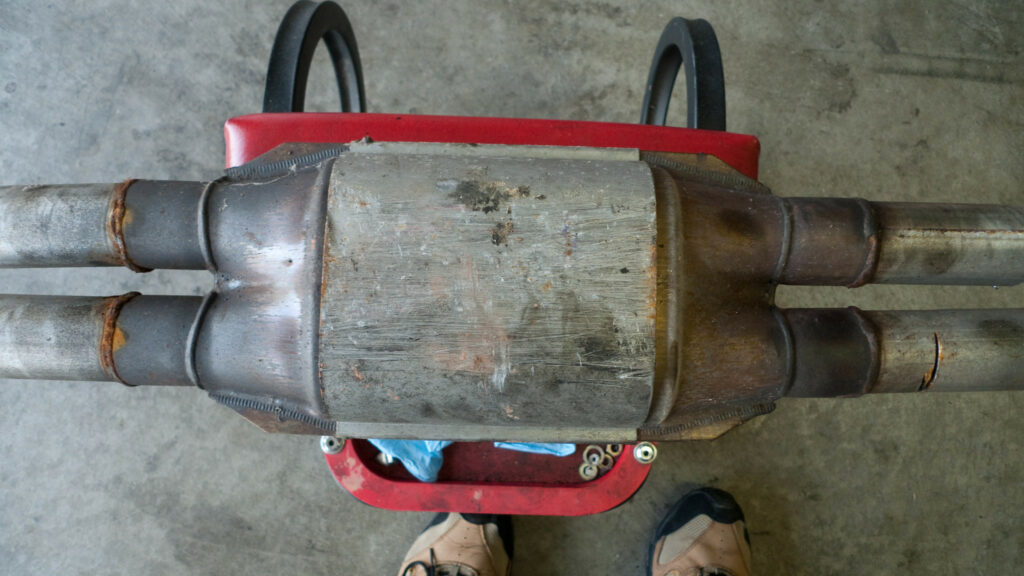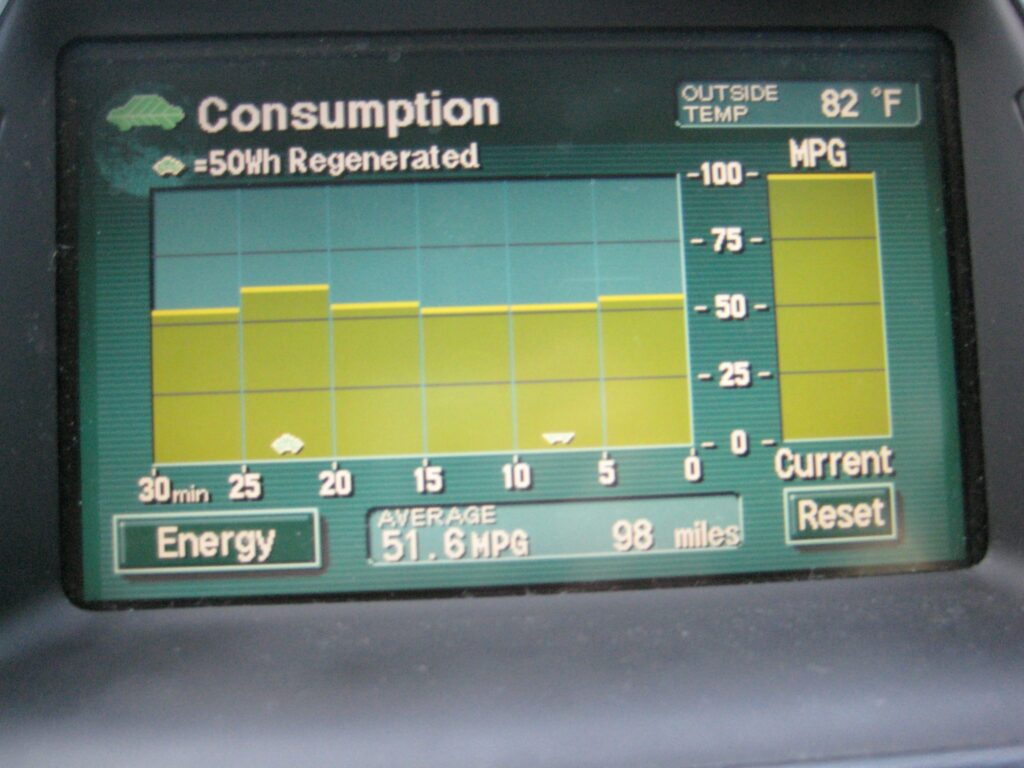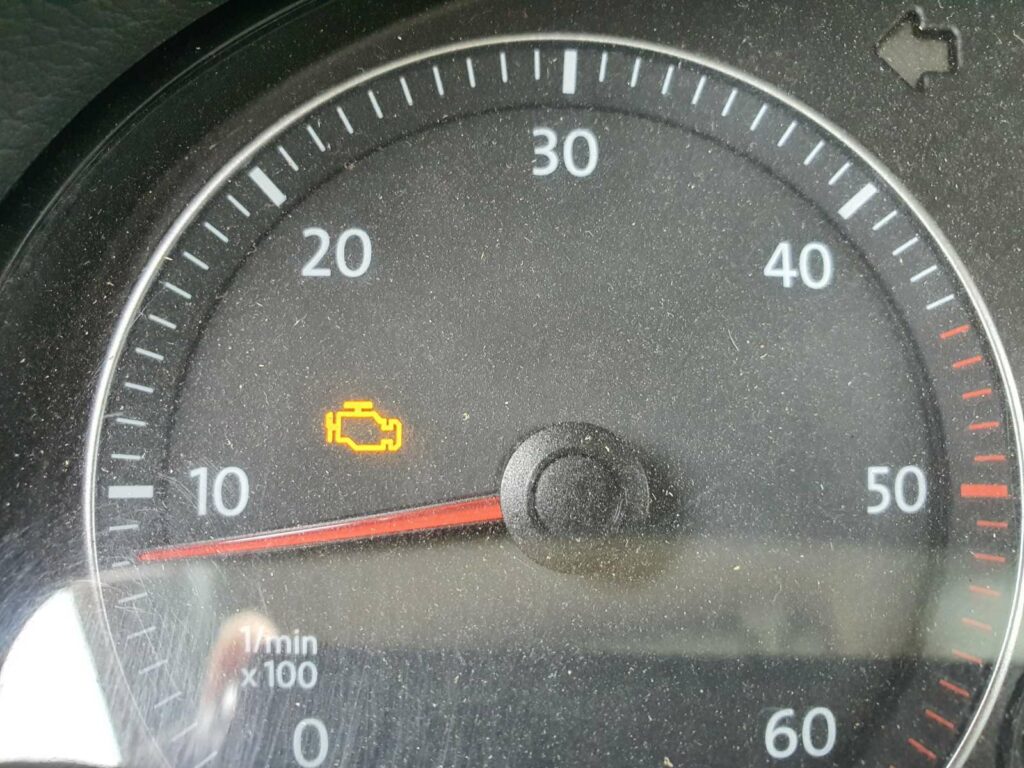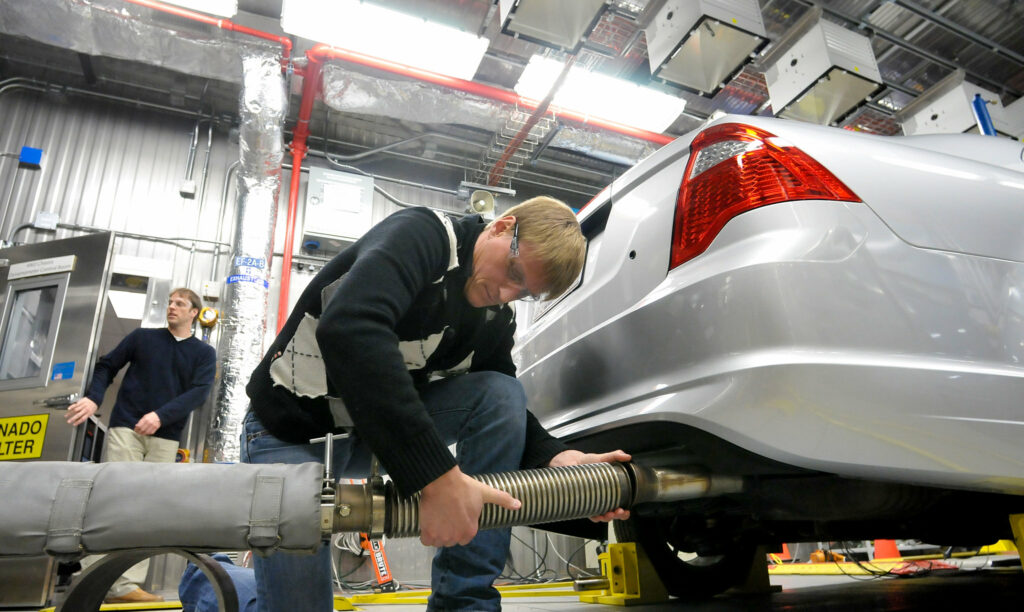Engine misfires are a common symptom of several car problems. If your car engine is struggling, the first thing you should do is check the O2 sensor. This component is responsible for measuring the amount of oxygen in the exhaust system. But, if it’s not working properly, can a bad O2 sensor cause a misfire?
In this blog post, we will discuss what to do if your car engine is misfiring and will also provide some tips on how to prevent this from happening in the future.
Key Takeaway
- An O2 sensor, or oxygen sensor, is a device in a vehicle’s exhaust system that monitors the level of oxygen in the exhaust gases to help regulate the air-fuel mixture for optimal engine performance and emissions control.
- A bad O2 sensor can cause a misfire by providing incorrect information to the computer controlling the engine, disrupting the optimal air-fuel mixture, and leading to issues like rough idling and loss of power.
- Driving with a bad O2 sensor can lead to poor fuel efficiency, increased pollution, rough driving and stalling, potential damage to your engine over time, and your vehicle’s powertrain not running on the correct fuel mixture.
What is an O2 Sensor and its Function?

The O2 sensor, also known as the oxygen sensor, is a key electrical component of your car’s emissions system. This electrical device measures the amount of oxygen in the exhaust gases leaving the engine.
In simpler terms, the O2 sensor helps regulate the air-fuel ratio of your car’s engine. Also, an O2 sensor sends signals to the vehicle’s computer (PCM), allowing it to know if the fuel mix has inadequate oxygen (burning rich) or too much oxygen (burning lean).
The O2 sensor monitors the amount of oxygen in the exhaust gas and sends a signal to the engine control unit (ECU). The ECU then adjusts the fuel injectors to ensure that the correct air-fuel mixture is delivered to the engine.
Most modern cars have two O2 sensors- the upstream O2 sensor and the downstream O2 sensor. The upstream sensor is responsible for monitoring the number of pollutants in the engine’s exhaust. You can find it before the catalytic converter. On the other hand, the downstream O2 sensor keeps the level of pollutants going through the catalytic converter in check. This sensor is located after the converter.
A proper air-fuel ratio in the engine allows your vehicle to run as it should and helps balance power, emissions, and fuel economy. Today, two major types of O2 sensors are in use: wide-band and conventional zirconia.
The wide-band O2 sensor is capable of monitoring the exact air-fuel mixture over a wide range. This allows for more precise system monitoring. On the flip side, conventional zirconia O2 sensors only function as a rich-lean indicator of an air-fuel mixture. Also, it does this within a smaller range compared to the wide-band O2 sensor.
Can a Bad O2 Sensor Cause a Misfire?

Yes, a bad O2 sensor will cause a misfire. The O2 sensor monitors the oxygen levels in the exhaust and sends a signal to the engine control unit (ECU). If the oxygen level is too low, it could indicate that the air-fuel mixture is too rich and could cause a misfire.
An engine misfire occurs when one or more of the cylinders in an engine fail to fire properly. The most common cause of this is a loss of spark, which can be caused by a variety of factors including faulty spark plugs, bad wires, or a problem with the air and fuel supply.
When an engine misfires, it will often run rough and may produce a popping noise from the exhaust. The engine may also hesitate or stall when accelerating.
The O2 sensor plays a significant role in the full functionality of the engine. For example, it controls combustion intervals, air-fuel ratio, and control engine time.
If this part begins to malfunction, your vehicle may experience constant or occasional engine misfires. To be specific, a bad O2 sensor can cause your engine to misfire by sending the wrong information to the computer (PCM).
In case the O2 sensor sends incorrect data to the PCM, it means that the air-fuel ratio will be compromised. When this happens, the combustion reaction won’t work as it should due to a wrong air-fuel mixture, leaving the engine’s cylinder unfired. If this occurs, the fuel would be dumped out of the exhaust.
Additionally, a defective O2 sensor may also result in hesitation, loss of power, and stalling.
What Happens If You Drive With a Bad O2 Sensor?
- Premature wear on the catalytic converter
- Increased fuel consumption
- Engine misfire
- Check engine light comes on
- Black smoke from the exhaust
- You won’t pass the emissions test
An oxygen sensor is an important part of a car’s emission control system. It helps to ensure that the engine is running at its most efficient level, which in turn helps to protect the environment. If your car’s oxygen sensor is not working properly, it can cause a number of problems.
1. Premature wear on the catalytic converter

While you can drive with a faulty O2 sensor, it’s not something you want to do for a long time. This is because driving with a bad oxygen sensor can cause severe damage to your vehicle’s catalytic converter.
When you drive with a defective O2 sensor, it won’t be able to measure the amount of oxygen in the mixture accurately. By implication, it won’t detect an overly rich mixture that could clog the catalytic converter.
This is because the job of the catalytic converter is to burn excess fuel before it gets to the exhaust. If the mixture is overly rich, it means that it has to continually burn excess fuel. The result of this is a clogged catalytic converter.
2. Increased fuel consumption

Another problem that will occur if you drive with a bad O2 sensor is increased fuel consumption. This happens because the engine is not able to adjust the air/fuel mixture properly. As a result, more fuel is needed to run the engine, and this ultimately leads to higher emissions levels.
An oxygen sensor is a key component in the emissions control system of your vehicle. It monitors the exhaust gases coming out of the engine and adjusts the air/fuel mixture to ensure that the engine is running as efficiently as possible.
When an O2 sensor fails, it can cause increased fuel consumption because the engine will be running too rich or too lean. In either case, this will result in decreased gas mileage and increased emissions.
3. Engine misfire

A bad O2 sensor can cause a misfire because the sensor is not going to be able to measure the amount of oxygen that is entering the combustion chamber. When the air-to-fuel ratio is too low, there isn’t enough fuel to combust properly, which can lead to engine sputter.
Lean conditions can be caused by several factors, including a dirty air filter, leaking intake manifold gaskets, or a faulty oxygen sensor (O2 sensor).
Engine sputter/misfire can be frustrating and even dangerous if it leads to stalling while driving. If you’re experiencing an engine sputter, it’s important to have it diagnosed by a professional mechanic so they can determine the root cause and make the necessary repairs.
4. Check engine light comes on

Most of the time, a faulty oxygen sensor will trigger a check engine light. However, there are a few other reasons why your check engine light might come on, so it’s always best to get it diagnosed by a professional.
If you have an OBD-II reader, you can often tell if your oxygen sensor is bad by the code that it throws. P0141, P0161, and P0171 are all codes that indicate a problem with the O2 sensor.
5. Black smoke from the exhaust

A bad O2 sensor can cause black smoke from the exhaust if it’s not functioning properly. The O2 sensor is responsible for monitoring the air-to-fuel ratio in order to ensure that the engine is running efficiently. If the O2 sensor is not working correctly, it can cause an imbalance in the air-to-fuel ratio which can lead to black smoke coming from the exhaust.
If you’re seeing black smoke from your exhaust and you suspect that it may be due to a faulty O2 sensor, it’s important to have it checked out by a mechanic as soon as possible. Ignoring this problem could result in further damage to your engine.
6. You won’t pass the emissions test

A bad O sensor can cause increased emissions. The reason has to do with the way your engine runs. Your car’s computer uses information from the O2 sensor to adjust the air/fuel mixture going into your engine. If the sensor isn’t working right, the mixture might be too rich or too lean. That can cause your car to fail its emissions test says 1Aauto.
Most Common Symptoms Of A Bad O2 Sensor

- Check engine light comes on
- Bad gas mileage
- Rotten egg smell from the exhaust
- Black smoke from the exhaust
- High emissions level
- Engine misfire
- Premature wear on the catalytic converter
If your vehicle exhibits any of the symptoms below, there’s a likelihood that you have a bad O2 sensor.
1. Check engine light comes on
If you have a faulty O2 sensor, a bright orange check engine light will illuminate. However, you should know that a check engine light can be triggered for a number of reasons and not just because of a bad O2 sensor. It will be in your best interest to have a professional check it out. As a better option, you can use your OBD-II scanner to test for a malfunctioning O2 sensor.
P0130, P0133, and P0420 are the most common trouble codes associated with a bad O² sensor. If your vehicle has any of these codes, it’s likely that the O2 sensor needs to be replaced.
Other less common codes associated with a bad O2 sensor include P0131, P0132, P0134, P0421, and P0422. These codes typically indicate that the O2 sensor is not functioning properly or is not receiving enough power.
2. Bad gas mileage
Have you been spending so much money on fuel lately? If you have, your car might have a defective O2 sensor. You should know that your vehicle’s engine will be less efficient if the air-fuel ratio is too lean or too rich. A malfunctioning O2 sensor may not be able to monitor the mixture properly, causing your vehicle to consume more fuel.
Bad oxygen sensors can decrease fuel consumption by up to 40%. Replacing a bad oxygen sensor can improve your car’s fuel economy and performance.
3. Rotten egg smell from the exhaust
A sulphuric or rotten egg smell from your vehicle’s exhaust is an indicator of a bad O2 sensor. Having this smell from your car’s exhaust implies that there is too much fuel inside the engine. By implication, the air-fuel mixture needs to be corrected. Keep in mind that a functioning O2 sensor would have detected this problem.
When your car’s engine burns gasoline, the process also creates sulfur dioxide gas. That gas mixed with moisture in the air can form sulfurous acid, and that’s what makes that rotten egg smell.
The catalytic converter helps to remove some of the sulfur dioxide gas before it has a chance to mix with moisture and create that odor. This additionally puts stress on the catalytic converter and can cause premature wear.
4. Black smoke from the exhaust
If your vehicle has a faulty O2 sensor, the air-fuel ratio becomes imbalanced. This is because the device (O2 sensor) designed to regulate it is malfunctioning. The imbalance will negatively affect combustion efficiency resulting in backfiring, unburned fuel, and black smoke from your car’s exhaust.
5. High emission level
One of the functions of the O2 sensor is to reduce the level of air contaminants released from the exhaust pipe by regulating the air-fuel mixture of your vehicle. A bad O2 sensor will cause your car to have a high emission level, repeatedly causing it to fail the emission test.
Oxygen sensors are an important part of your car’s emissions control system. A bad oxygen sensor can cause your car to fail an emissions test. If you think you have a bad oxygen sensor, have it checked by a qualified mechanic.
6. Engine misfire
A bad O2 sensor can cause an engine to misfire. The oxygen sensor is responsible for monitoring the amount of oxygen in the exhaust stream. When it senses that there’s too much oxygen, it sends a signal to the engine computer to adjust the air/fuel mixture.
If the O2 sensor is faulty, it can cause the engine to run lean (too much air and not enough fuel). This can cause engine hesitation, misfire, and potential damage to your catalytic converter.
7. Premature wear on the catalytic converter
The catalytic converter is one of the most important parts of your car’s emission control system. It helps to reduce harmful pollutants in exhaust gas before they are released into the environment. A faulty oxygen sensor can cause damage to the catalytic converter by sending incorrect information to the engine computer.
This can cause the engine to run too lean or too rich, which can lead to premature wear and tear on the catalytic converter. If you suspect that your oxygen sensor is not working properly, it is important to have it checked by a qualified mechanic as soon as possible. Ignoring a problem with your oxygen sensor can ultimately lead to costly repairs or even the replacement of the catalytic converter.
FAQs
Q: How can I diagnose a bad O2 sensor?
A: A bad O2 sensor can be diagnosed using a scan tool or diagnostic code reader. These tools can retrieve the error codes stored in the vehicle’s computer system and indicate if there is a problem with the O2 sensor. Additionally, a mechanic can perform tests using a multimeter to check the sensor’s voltage and response time.
Q: Can a bad O2 sensor cause a check engine light to come on?
A: Yes, a malfunctioning O2 sensor is one of the common causes for the check engine light to come on. If the O2 sensor is sending incorrect or no signals to the vehicle’s computer, it may trigger an error code and illuminate the check engine light on the dashboard.
Q: How long does an O2 sensor last?
A: The lifespan of an O2 sensor can vary depending on several factors including the type of sensor, the vehicle’s make and model, and the driving conditions. Generally, an O2 sensor can last anywhere between 50,000 to 100,000 miles (80,000 to 160,000 kilometers), but it is recommended to replace them every 60,000 miles (96,000 kilometers) to ensure optimal performance.
Q: Can I clean a bad O2 sensor?
A: Cleaning an O2 sensor is not recommended. The sensors are exposed to extreme heat and contaminants in the exhaust gases, which can cause buildup and damage over time. Once an O2 sensor starts to malfunction, it is best to replace it with a new one to restore proper functionality.
Q: How much does it cost to replace an O2 sensor?
A: The cost of replacing an O2 sensor can vary depending on the vehicle’s make and model, the location of the sensor, and the labor rates of the repair shop. On average, the replacement cost can range from $100 to $300 including parts and labor.
Q: Can I drive with a bad O2 sensor?
A: While it is possible to drive with a malfunctioning O2 sensor, it is not recommended. A bad sensor can lead to decreased fuel efficiency, poor engine performance, and increased emissions. Additionally, ignoring the problem can cause damage to other components of the vehicle’s engine and exhaust system.
Q: Can a bad O2 sensor affect fuel economy?
A: Yes, a malfunctioning O2 sensor can negatively affect fuel economy. The O2 sensor plays a crucial role in determining the air-fuel mixture for optimal combustion. If the sensor sends incorrect readings to the vehicle’s computer, it can lead to a rich or lean fuel mixture, resulting in decreased fuel efficiency.
Q: Can a bad O2 sensor cause a car to fail emissions?
A: Yes, a bad O2 sensor can cause a vehicle to fail emissions testing. As mentioned earlier, a malfunctioning O2 sensor can lead to increased emissions and can affect the vehicle’s ability to meet the required emission standards.
In Conclusion
A bad O2 sensor can cause a misfire by sending wrong data to the vehicle’s computer and disrupting the combustion intervals and the air-to-fuel ratio.
Related Articles:
- P0135 OBD-II O2 Sensor Heater Circuit Bank 1 Sensor 1 Trouble Code
- P0140 OBD-II O2 Sensor Circuit No Activity Detected Bank 1 Sensor 2 Trouble Code
- O2 Sensors In Cars: Everything You Need To Know
- P0138 OBD-II O2 Sensor Circuit High Voltage Bank 1 Sensor 2 Trouble Code
- P0131 OBD-II O2 Sensor Circuit Low Voltage Bank 1 Sensor 1 Trouble Code
- P2195 OBD-II O2 Sensor Signal Biased/Stuck Lean Bank 1 Sensor 1 Trouble Code
- How To Clean O2 Sensor Without Removing It
